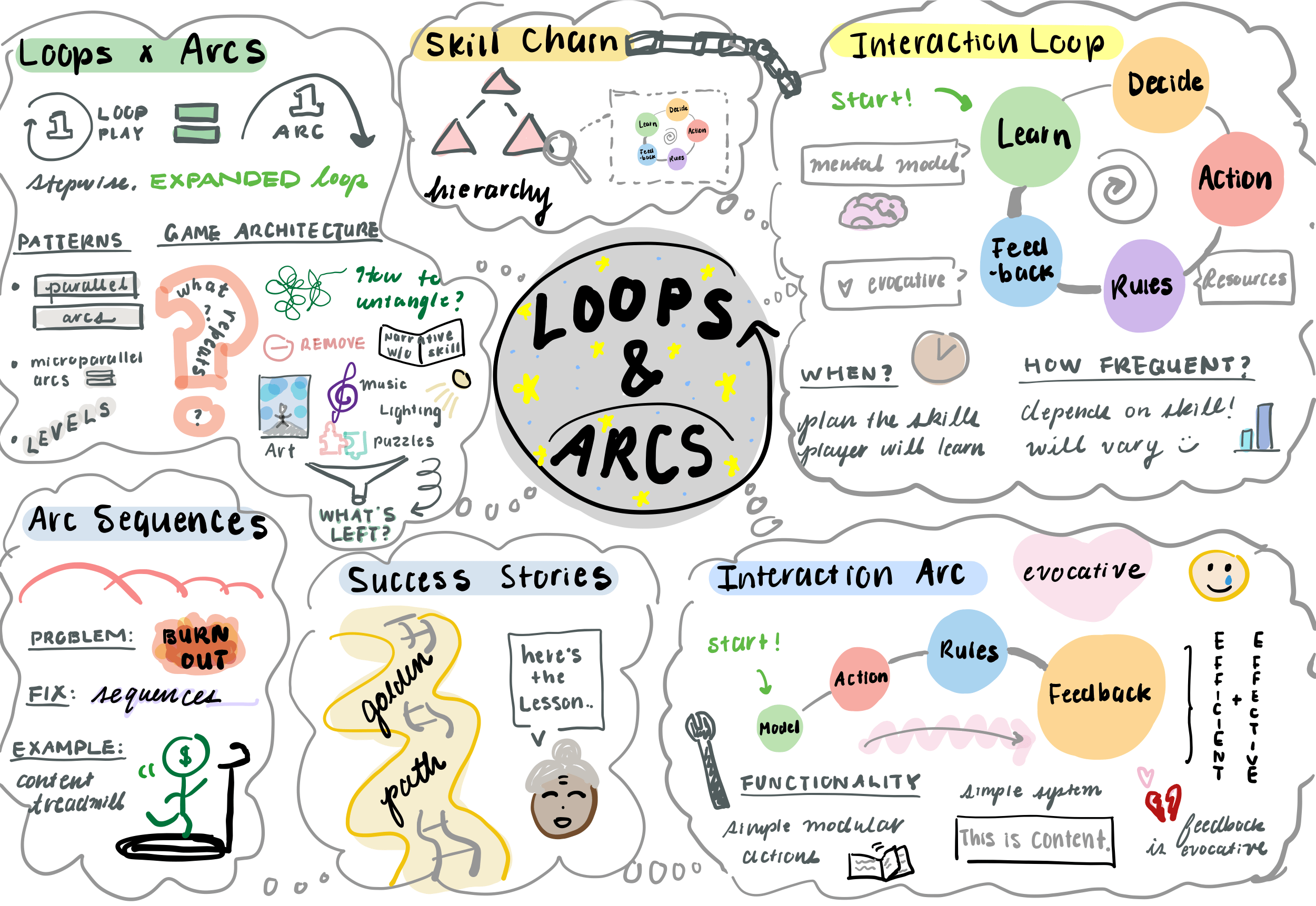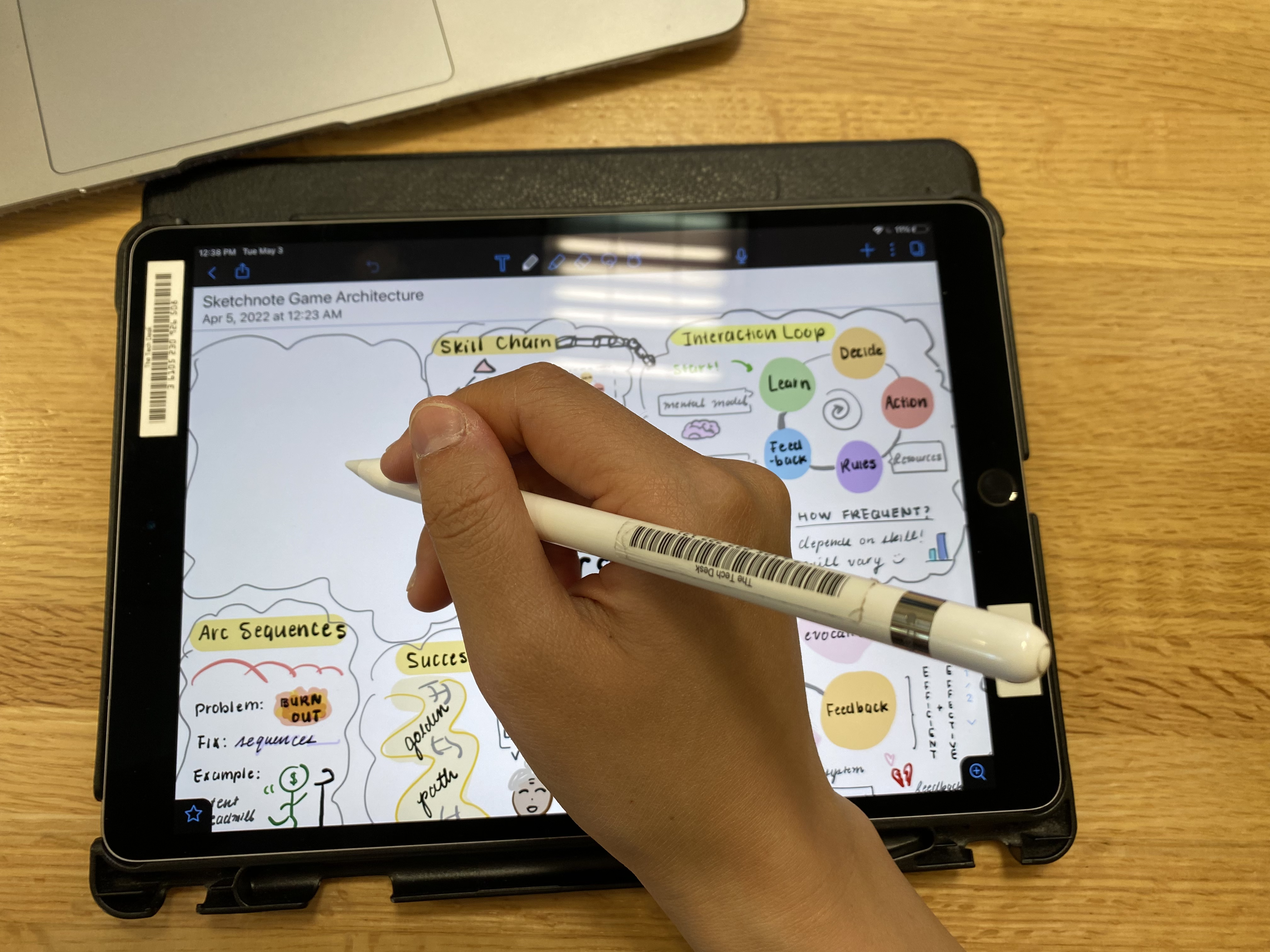Below is my sketchnote on Dan Cook’s “Interaction Loops and Arcs.” This week’s challenge was to try grouping the information in a different way, and I tried doing it in a radial style with different thought bubbles emerging from each other or from the main idea. I still ended up using most of the paper, but it was fun to think about what stemmed from what.

I’ll try to apply what I’ve learned here to the popular game Wordle. Since this is a daily, one-puzzle-a-day game, you’re only able to start your next play of the loop after a day has passed. I would view the larger player goal of solving each day’s word as a loop, in which every loop play corresponds to a day. Within that, there’s another interaction loop that corresponds to each row or guess that you use on a single day. After seeing which letters are gray (not in the word), yellow (in the word in the wrong place), or green (correct placement), the player uses that feedback to loop back and use what they’ve learned in the next loop iteration or row. Because the game doesn’t have many elements that are non-essential to gameplay, stripping down the way the letters flip to reveal their correctness just leaves the correctness itself. Another way the player learns in the loop from day to day is through choosing different types of words or utilizing different letters, as they update their mental model of the best kinds of words to give them success.


